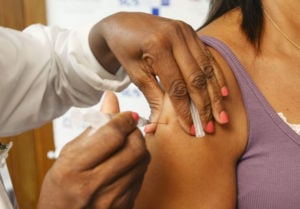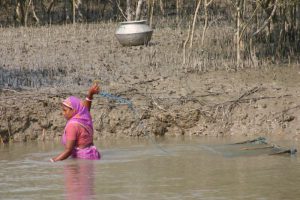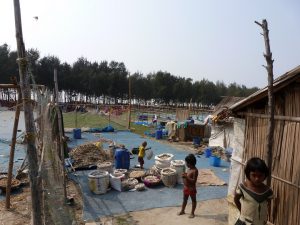Yellow fever has now spread from Brazil to Bolivia, Peru, and Colombia, the Pan-American Health Organisation (PAHO) has confirmed. The organisation had previously warned the disease could cross Brazil’s borders into neighbouring countries with similar ecosystems. The wild strain of yellow fever common among primates is transmitted to humans via the Haemagogus mosquito, which inhabits the jungle.
The current outbreak of yellow fever, which tends to occur roughly every seven years in Brazil, is far greater than any previous one the country has experienced. 274 cases resulting in 92 deaths have been confirmed. This time around, 1,286 suspected cases of yellow fever have been reported in total. Both the Brazilian government and the World Health Organisation (WHO) fear yellow fever will reach major cities where it may become transmittable by the Aedes aegypti mosquito – carrier of dengue fever, the Zika virus, and Chikungunya.
While much of the recent global attention on mosquito-borne viruses focused on Brazil as it hosted sporting mega-events the 2014 FIFA World Cup and the 2016 Olympics, the spread of the virus to neighbouring countries forces us not just to control it, but also to question why it is happening.
New patterns
In recent decades, health experts elsewhere in the world have noted changes in the distribution of mosquito-borne viruses include Chikungunya, Zika, and dengue. In Australia, for example, the increased frequency of dengue epidemics in tropical Queensland since the early 1990s and the occurrence of Japanese encephalitis in the Torres Strait Islands in 1995 attracted considerable local interest.
Each time a mosquito-transmitted virus occurs in a new setting or increases in frequency there is speculation that climate change may be the cause. This is because there are well known associations between climate and the biology and ecology of the mosquito vector, and climate undoubtedly has other impacts, which may affect the risk of human infection.
The seminal work of late Australian epidemiologist Tony McMichael and many other researchers and practitioners has increased awareness globally of the health impacts of climate change on human health. The release in 2015 of the Lancet Commission report on health and climate change brought further attention to the issue, opining that it represents the “greatest global health opportunity of the 21st century”. The report said tackling carbon emissions could reduce respiratory diseases and the promotion of active modes of transport such as cycling could improve cardiovascular wellbeing.
Medical organisations globally including The British Medical Association and my own college, The Royal Australasian Colllege of Physicians recognise the importance of climate change as both a threat to, and an opportunity for the improvement and protection of, health.
This gives reason for us to wonder whether changes in the global climate is a cause, or even the primary cause for the dramatic changes in ecology and epidemiology of mosquito-borne diseases observed in recent decades – including the recent outbreak of yellow fever in Brazil. This is an enormously difficult question to answer, and perhaps is not even the most important.
Observational studies on a variety of mosquito-borne viruses have demonstrated repeatedly that changes in rainfall, temperature, and biological factors important to transmission have associations with the distribution of human disease. It is therefore implausible that changes in the global climate will occur without causing associated changes in the epidemiology of mosquito-borne diseases.
However, other factors, including land clearing and the availability of a vaccine (in the case of yellow fever), have significant impact in determining disease occurrences. For each disease and in each epidemiological setting a different set of physical and biotic factors affect disease frequenc. These can include, for example, human travel as a determinant of dengue incidence, and number and distribution of kangaroos, as is the case with the Australian Ross River virus.
These factors, along with practical difficulties in measuring both disease incidence and climatic parameters make it difficult to determine the level of importance of climate change in changing the incidence of vector-borne diseases. Climate change is undoubtedly a factor modifying disease epidemiology, but quantifying the impact is not straightforward. Others factors include land clearing and urbanisation.
For health, just as with other issues such as the economy and security, we must continue to act together, globally, to reduce emissions and limit the warming of the planet and also respond to the effects of climate change on our society.
Urging human ingenuity to respond to the challenge of climate change, the late Professor Tony McMichael wrote in his last, posthumously published book Climate Change and the Health of Nations: “Our species has not been tested collectively, globally, like this before. Human ingenuity and imagination may flourish as never before.”
McMichael also points to the work of Alfred Russell Wallace, Darwin’s younger contemporary naturalist-evolutionist, who wrote in light of his often-harrowing experiences in the Amazon that it is the struggle for existence which exercises the moral faculties and calls forth the latent sparks of genius.
“If we learn from the past, understand the present, and imagine a better and more sustainable future, we may yet call forth such sparks to ignite corrective action and light the path to a sustainable way of living on a finite planet” McMichael wrote.







